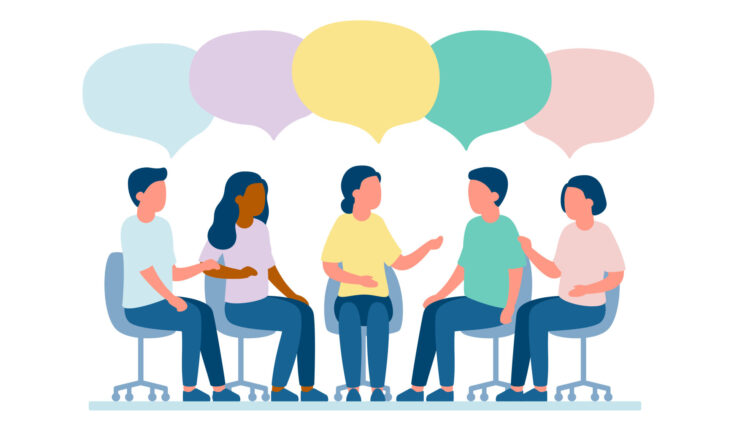Language is not static; it is an organic, evolving reflection of the societies that wield it. Nowhere is this more visible than in slang, those seemingly ephemeral linguistic innovations that surge into popularity, recede, and sometimes fossilize into the bedrock of everyday speech. Slang is often treated as a superficial or whimsical phenomenon, yet, from an evolutionary anthropologist’s perspective, it is a critical lens through which we can understand human social bonding, status negotiation, group identity, and signaling behavior.
This essay examines the specific evolution of male address terms in American English, tracing the shift from early 20th-century terms like “pal” and “fella,” to “man” (dominant in the mid-20th century), to “dude” (ascendant from the late 1970s through the 1990s), to “bro” (exploding in the 2000s and still prevalent today). By exploring this linguistic arc, we uncover the adaptive, deeply social functions of slang and its role as a mirror of broader socio-cultural transformations.
Slang as an Adaptive Strategy
At the most fundamental level, humans are social animals whose survival and reproductive success have depended upon coalition-building, alliance formation, and group cohesion. Language, beyond its referential function, serves as a critical tool for signaling belonging, loyalty, and shared identity. Slang, as a subset of language, heightens these signaling properties: it is exclusive, dynamic, and often incomprehensible to outsiders.
From an evolutionary standpoint, mastering the “right” slang at the “right” moment can be understood as a kind of adaptive behavior, much like the vocal displays of primates to indicate group membership or readiness to cooperate. The specific slang used, acts as a costly signal (in the Zahavian sense) of insider knowledge, social competence, and situational awareness. Failure to track these linguistic shifts risks social exclusion, particularly among adolescents and young adults, whose evolutionary pressure to integrate into peer groups is at its peak.
Against this backdrop, the rise and fall of terms like “pal,” “fella,” “man,” “dude,” and “bro” are not arbitrary. They are highly patterned, reflecting evolving ideals of masculinity, camaraderie, emotional expression, and status negotiation within American society.
“Pal”: Early 20th-Century Camaraderie and Egalitarianism
The term “pal” emerged in American English in the late 19th and early 20th centuries, derived from the Romani word “phral,” meaning “brother.” It quickly became a popular term of endearment among men, signifying close friendship and equality. In the context of the early 1900s, a period marked by rapid industrialization, urbanization, and the rise of labor unions, “pal” resonated with the working-class ethos of solidarity and mutual support.
“Pal” was commonly used among soldiers during World War I, further cementing its association with camaraderie and shared hardship. The term’s egalitarian connotation made it a fitting choice in environments where cooperation and mutual reliance were essential for survival and success.
Linguistically, “pal” functioned as an inclusive term, breaking down social barriers and emphasizing commonality over hierarchy. Its widespread usage reflected a cultural moment that valued fraternity and collective identity, particularly among men navigating the challenges of a rapidly changing society.
“Fella”: Regional Identity and Informal Affection
“Fella,” a colloquial pronunciation of “fellow,” gained popularity in American English during the early to mid-20th century. It was especially prevalent in rural and Southern dialects, where it conveyed a sense of familiarity and informal affection. “Fella” often appeared in narratives and dialogues depicting everyday life, reinforcing its role as a term rooted in regional identity and cultural nuance.
The usage of “fella” as a term of address among men highlighted a more relaxed and personable form of interaction. It suggested a bond that was less about formal alliances and more about shared experiences and mutual understanding within a community.
From an anthropological perspective, “fella” illustrates how language adapts to reflect and reinforce social structures and relationships. Its regional variations and informal tone underscore the importance of context in shaping linguistic choices and the meanings they convey.
“Man”: Post-War Solidarity and Adult Emulation (1940s–1960s)
The widespread use of “man” as a form of address among young American males took off in the 1940s and 1950s, heavily influenced by the lexicon of jazz musicians and Beat Generation writers. Figures like Jack Kerouac, Allen Ginsberg, and musicians in Harlem jazz clubs used “man” both literally and symbolically to invoke coolness, respect, and solidarity.
This period in American history was marked by rigid adulthood ideals: stoicism, competence, and a clear demarcation between child and adult roles. Boys aspired to become “men” as quickly as possible, embracing adult responsibilities, work ethics, and sexual norms. Calling someone “man” operated as a form of linguistic aspiration, a performative declaration that both speaker and listener were part of the adult, masculine world.
Interestingly, the term also functioned as a subtle rebellion. Within African American Vernacular English (AAVE), “man” could simultaneously express resistance to dehumanization and a proud assertion of dignity during the era of systemic racial oppression. When crossing into mainstream white youth culture via music and literature, “man” maintained its edge of informality, independence, and respect.
Thus, “man” was both a nod to societal expectations and, in some circles, a sly undercutting of them. It was a balancing act: conveying seriousness and adulthood, but within a peer framework that allowed a little playfulness.
“Dude”: Surfing, Slacking, and Emotional Softening (1970s–1990s)
The transition from “man” to “dude” around the late 1970s marks a profound shift in American masculinity and peer culture.
The earliest recorded usage of “dude” dates to the late 19th century, where it originally referred to a dandy—a man overly concerned with fashion and appearance. By the 20th century, the term had taken root in the American West as a descriptor for city-slickers or inexperienced tourists. But it wasn’t until California’s surfing subculture that “dude” was fully reappropriated into its modern form: a casual, friendly term between male peers emphasizing relaxed coolness, emotional understatement, and easygoing solidarity.
Surf culture, and later skateboard and stoner cultures, incubated a new model of masculinity—one less concerned with duty and adulthood, and more aligned with authenticity, freedom, and nonchalance. “Dude” conveyed a kind of emotionally neutral familiarity. You could use it to greet a friend, express disbelief (“Dude!”), mourn misfortune (“Dude…”), or summon camaraderie.
Linguistically, “dude” allowed a softening of male emotional expression without threatening social status. Unlike “man,” which carried the weight of adult responsibility and sometimes implicit competition, “dude” flattened hierarchies. Everyone could be a “dude.” The term subtly rejected the rigid social scripts of previous generations, enabling young men to show care, excitement, sadness, and even vulnerability in coded ways.
Movies like Fast Times at Ridgemont High (1982), Bill and Ted’s Excellent Adventure (1989), and The Big Lebowski (1998) cemented “dude” as the archetypal American male peer term by dramatizing, and satirizing, the slacker, easygoing ethos.
From an evolutionary perspective, “dude” helped recalibrate male coalition behaviors. Instead of emphasizing hierarchy and competition (traits selected for in dangerous environments), “dude” supported cooperation, emotional intelligence, and low-conflict bonding, traits more adaptive in the relatively safe, affluent late-20th century American environment.
“Bro”: Tribalism, Gym Culture, and the New Masculinity (2000s–Present)
By the early 2000s, “dude” was ubiquitous, so much so that it lost much of its signaling power. Enter “bro.”
“Bro” initially emerged in fraternity circles and gym subcultures, shorthand for “brother,” but quickly exploded beyond those confines. In contrast to the emotional neutrality of “dude,” “bro” conveyed a stronger sense of active alliance and shared mission, often tied to displays of physical prowess, loyalty, and collective identity.
At first, “bro” had a narrowly tribal function, used among young men in high-intensity environments—fraternities, sports teams, military units—where loyalty, strength, and protection were paramount. “Bro” acknowledged shared risk, shared striving, and a readiness to defend group interests.
However, as the term diffused into broader culture, it picked up additional layers: both celebratory and satirical. The “bro” archetype—muscular, enthusiastic, slightly brash—was both admired and gently mocked, depending on context. Reality shows like Jersey Shore (2009) and viral internet memes helped crystallize “bro” as not just a term of endearment, but also a semi-ironic label for a certain kind of hyper-social, often hyper-masculine young man.
Linguistically, “bro” signals a tighter, more exclusive bond than “dude.” To call someone “bro” is to claim them as an in-group member: someone you would back in conflict, celebrate in success, and perhaps tease mercilessly in private. It reintroduces a mild form of hierarchy and tribalism absent from the egalitarian “dude” era.
From an evolutionary view, “bro” reflects the dynamic tension between cooperative group bonding and in-group competitive posturing. As American society became more polarized and fragmented along political, racial, and class lines in the 2000s, “bro” provided a ready linguistic tool for young men to reinforce micro-tribal identities.
Interestingly, “bro” has also evolved into female speech (“bruh,” “sis-bro” dynamics), queer speech (“bruh” culture among some LGBTQ circles), and multiethnic slang, demonstrating its flexibility as a social signal adaptable to many different forms of coalition-building.
Deeper Currents: Why Slang Evolves
The shifts from “man” to “dude” to “bro” are not random. They map onto broader historical arcs:
- Economic Security vs. Precarity: The move from adult-oriented “man” to casual “dude” coincides with the post-WWII boom and relative affluence. The shift to “bro” parallels rising precarity, tribalism, and the need for tighter social bonds in uncertain environments.
- Masculinity Reframed: As feminism, civil rights, and shifting social norms challenged traditional masculinity, male speech adapted. “Dude” relaxed it; “bro” reinforced it selectively.
- Cultural Diffusion Speed: Technology accelerates slang cycles. What once took decades (man → dude) now happens in years, driven by social media, memes, and hyper-connected peer groups.
- Signaling Complexity: Each new slang generation incorporates irony, self-awareness, and layered signaling. Saying “bro” today can be earnest, mocking, affectionate, or critical, all depending on tone and context. This reflects the human brain’s increasing demand for nuanced, flexible signaling strategies.
Slang thus performs the same adaptive functions it always has: defining in-groups, facilitating alliance formation, regulating emotional expression, and navigating status hierarchies but at faster, more fluid tempos than ever before.
Conclusion: Slang as the Pulse of Cultural Evolution
Far from being trivial, the evolution of slang terms like “man,” “dude,” and “bro” encapsulates vast currents of cultural, emotional, and evolutionary change. Through slang, young men (and increasingly, young women) perform the age-old evolutionary task of coalition formation but under the unique pressures and possibilities of each era.
Every era, every peer group, every linguistic shift tells a story: of what it meant, and what it means, to belong.
And as long as humans continue their journey across the unpredictable landscape of cultural evolution, slang will continue to mutate, flourish, and fossilize in new forms, always whispering the deeper stories of who we are.
Citations:
- Eble, C. (1996). Slang and Sociability: In-Group Language Among College Students. University of North Carolina Press.
- Green, J. (2010). Green’s Dictionary of Slang. Chambers.
- Kiesling, S. F. (2004). Dude: Identity and Social Meaning. American Speech, 79(3), 281–305.
https://doi.org/10.1215/00031283-79-3-281 - Dalzell, T. (2009). Flappers 2 Rappers: American Youth Slang. Dover Publications.
- Partridge, E. (2007). A Dictionary of Slang and Unconventional English. Routledge.
- Oxford English Dictionary Online. (n.d.). Entries for pal, fella, man, dude, bro.
https://www.oed.com/ - Bucholtz, M. (1999). “Why Be Normal?”: Language and Identity Practices in a Community of Nerd Girls. Language in Society, 28(2), 203–223.
- Tagliamonte, S., & Roberts, C. (2005). So Weird; So Cool; So Innovative: The Use of Intensifiers in the Television Series Friends. American Speech, 80(3), 280–300.
- Milroy, J., & Milroy, L. (1992). Social Network and Social Class: Toward an Integrated Sociolinguistic Model. Language in Society, 21(1), 1–26.
- Campbell, K. (2017). “Bro” Culture: An Ethnographic Exploration of Masculinity.
https://thesocietypages.org/




